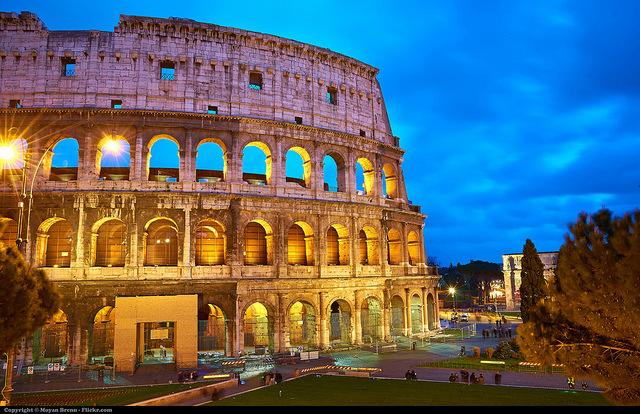All about the Colosseum in Rome
The Colosseum was commissioned by Emperor Vespasian around 70AD and it was meant to be a gift to the people of Rome. The Colosseum, then known as the Flavian Amphitheater, was opened by Titus, Vespasian’s son, with 100 days of Roman games. It was actively used for 400 years, after which it fell into neglect. Indeed, until the 18th century, it was simply used to gather building materials. As such, two thirds of it is now destroyed, but enough of it remains standing to be enjoyed by tourists, for instance on the A Taste of Italy Globus Tours to Italy. Indeed, it has been turned into a symbol of the long and tumultuous history of the Roman Empire.
The Origins
The emperor Nero committed suicide in 68AD, and his poor ruling meant many civil wars broke out, during which time four different emperors ruled Rome. The fourth was Vespasian, who was the first of the Flavian Emperors. During his ruling and the subsequent ruling of his two sons, they tried to make the courts less excessive, ensure the Senate’s authority was restored and public welfare was promoted again. Vespasian decreed that Nero’s Golden Palace, which was burnt down in an act of madness, would be replaced by an amphitheater for entertainment.
It took nearly ten years to construct the amphitheater, which was much quicker than other building project. Titus dedicated the opening to the people. Titus was much loved, particularly for the way he handled the destruction of Pompeii and Herculaneum after Vesuvius erupted in 79AD.
A Grand Amphitheater
The Colosseum is 620 by 513 feet in size, making it the largest in the Roman Empire. Other amphitheaters were generally dug into hills for support, but the Colosseum was completely freestanding, built of concrete and stone. It had 80 arched entrances across three stories and each of these stories had different styled columns. The bottom columns were Doric and designed, then Ionic and finally Corinthian. The Arch of Constantine is near the main entrance, and this was added later.
The Colosseum could seat over 50,000 people. Some believe that their seating arrangements were according to social ranking. However, judging by how the seating was arranged in other amphitheaters, it is more likely that they were simply packed into all available spaces. From the top story, there were awnings that could be unfurled. These were designed to protect spectators from the relentless heat of the sun. The games, which included hunts, gladiator combats and wild animal fights, could last a long time. It is even believed that mock naval combats were held here, for which the floor of the arena would be flooded. The expense of this was high, although the empire was able to save significant money on its gladiators, who were mainly slaves and prisoners. Interestingly, there were even some female gladiators.
Today, only the ruins of the Colosseum remain, but they are sufficiently intact to give people a true taste of what it was like at the height of its glory.
Image by Moyan_Brenn under cc license

